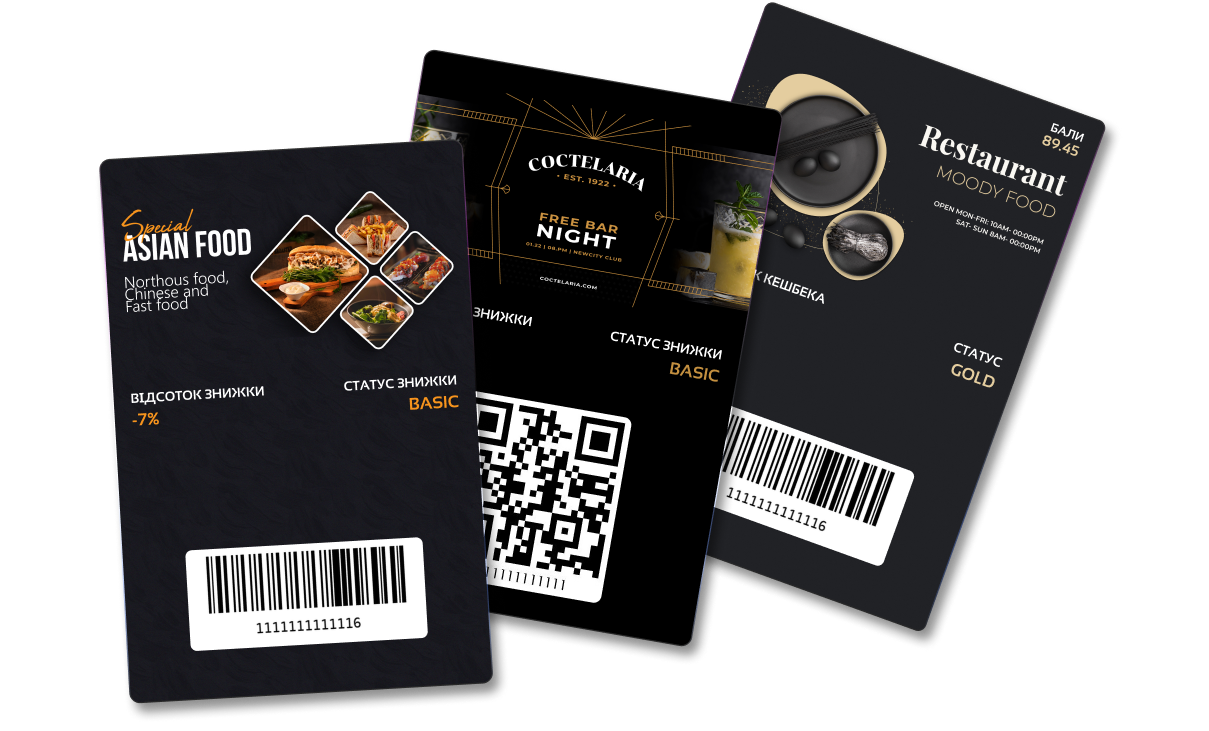
How to evaluate the effectiveness of the loyalty program
A loyalty program can be an effective tool for attracting and retaining customers. But it can turn into a burden for business, which only requires investment and does not bring results. Careful analysis will help to avoid this.







Why is loyalty important for business?
We've already talked a lot about loyalty programs and how to launch them on our blog. But why is customer loyalty so important for business and it is necessary to constantly work on its improvement?
Let's start with the fact that a loyal customer gives more money. You don't need to spend every time on marketing and "by hand" carry it through the entire sales funnel. He already knows the brand and trusts it, so he returns to the company himself, even if your prices are higher than those of competitors. Plus, such a consumer is very likely to buy other products from your assortment, which means additional sales and an increase in the average check.
Secondly, a loyal buyer advises his favorite brand to his friends and acquaintances.
According to various studies, such referrals have a record 90% trustworthiness, thanks to which your customer base will organically grow and expand even without any investment in marketing. Another important reason that companies often underestimate is that loyal customers are willing to leave reviews. Such feedback not only has a social factor, but also tells the business what can still be improved to make the brand even more attractive to the target audience.
From this we can come to the disappointing conclusion that increasing customer loyalty is no less important task for the company than attracting a new audience. This allows you to increase the volume of sales, increase competitiveness and brand recognition in the market, as well as save resources on lead generation.









Indicators of customer loyalty
Choosing and implementing the optimal bonus system in the business is only half of the success. The second half consists in tracking its effectiveness and efficiency with the help of KPI of the loyalty program - a set of special metrics that allow you to conduct an objective analysis of customer loyalty.
Such indicators are divided into two types — short-term and long-term:
- Short-term indicators . Demonstrate how the loyalty program works at the moment. And not only after launch, but also during its entire existence. Thus, companies get the opportunity to "keep their finger on the pulse" and respond in a timely manner to any market changes.
Long-term indicators . They help to analyze the effectiveness of the system over a long distance, for example, in a month or a year. They demonstrate the dynamics of changing relationships with customers and whether the loyalty program helps the business achieve its planned goals: increase profits, minimize customer churn, attract new audiences, increase customer value, etc.




Top 8 metrics for measuring the level of loyalty
To evaluate the effectiveness of its bonus program, the company can use different indicators of customer loyalty - depending on the niche, business model and priorities. In this article, we will take a closer look at the 8 main ones.
- Number of loyalty program participants
The first and main indicator is the number of new, lost and existing members of the loyalty program during the reporting period. Its main idea is to show whether the bonus system has a demand among the target audience and, therefore, whether it fulfills the tasks set before it.
Usually, this indicator grows rapidly in the first stages of the life cycle of a loyalty program and gradually stabilizes at the moment of its maturity, so it is quite difficult to determine what value will be considered success in your company - it all depends on the business area, customer base, market and many other variables.
Therefore, the main indication that the program is working successfully will be a positive value of this metric. It means that the number of consumers joining exceeds the number lost.


Top 8 metrics for measuring loyalty
2. Point Issuance Ratio
The scoring coefficient is used to determine the effectiveness of the loyalty program in relation to the company's goods or services. By monitoring this indicator every day, you will understand how much consumers are interested in the bonus program and how willingly they participate in it.
The indicator is calculated quite simply: Total number of points/Total revenue. We offer to consider how it works in practice.
Let's say your program offers 1 bonus point for every dollar a customer spends, and in the first week you have the following results:
- Total proceeds from the sale: $1,000.
- Total number of bonus points awarded: 500 points.
Point Issuance Ratio will be equal to 500/1000 = 0.5. Thus, the scoring ratio was 0.5 or 50%. To get a more accurate result, you can calculate the coefficient, for example, in the section of each group of goods.
The optimal value of this indicator is individual for each company and may depend on a specific business strategy or the goals of the loyalty program. In general, a high indicator indicates a good level of customer loyalty: they actively accumulate bonuses and their emotional connection with the brand is strengthened. But a very high value can lead to financial losses for the company.









Top 8 metrics for measuring the level of loyalty
3. Redemption rate
The Redemption rate is calculated as the ratio of spent points to the total number of points issued over a certain period of time, and allows you to understand how satisfied the members of the loyalty program are with the company's offers.
It is important to ensure that this indicator is relatively constant. If it starts to decrease, it means that consumers are not in a hurry to spend the accumulated points, and this should puzzle you, because customers are always not against saving. It is possible that the products that can be purchased with points do not bring value to the audience, or they are too expensive in terms of loyalty points.
4. Loyalty program transaction share
The metric shows the percentage of sales that the company received from members of the loyalty program. If you do not measure it, you may not notice that a third of customers simply register in the program, but do not make purchases, and therefore do not bring the company money.
5. Switching Rate
This metric shows how often your customers buy goods or order services from competitors. It helps identify trends in consumer behavior and generally determine their level of loyalty to the company, which can be used, for example, when developing new loyalty mechanisms and optimizing existing ones.
The lower the ratio, the more loyal customers are, as they prefer to interact only with your brand, even when there are alternatives.




Top 8 metrics for measuring loyalty
6. Customer Lifetime Value (CLV)
CLV measures the value of loyalty program members based on their past, actual, and projected purchases. It helps you determine which part of your customers is the most profitable for your business and which part is unprofitable, so you can focus your marketing efforts on the part of your target audience that will potentially bring in more money.
7. The size of the average check
Average check size is a statistic used in business to determine the average amount of money a customer spends per purchase. It is calculated by dividing the total amount of revenue by the number of purchases made for a certain period. For companies that seek to strengthen the loyalty of their consumers, it is important to analyze the relationship between the average check and the participants of loyalty programs.
This allows you to adapt the bonus system to encourage higher spending by customers, and thus increase business profitability.
8. Customer retention and churn
Retaining existing customers is usually cheaper for companies than attracting new ones, so minimizing the churn of the customer base is one of the primary tasks of any bonus system, and this indicator must be constantly monitored.
If the retention rate is high, the program is working effectively, attracting consumers and maintaining their interest in the brand or product. Otherwise, you should focus on finding problem areas in the loyalty program, which could be weak communication with customers or ineffective bonus offers.


Customer loyalty analysis tools
Brands can use a variety of tools to measure consumer loyalty. Here are some of the most common ones:
- Customer loyalty survey . Conducting surveys among customers and collecting feedback helps to understand their impressions, problems and expectations of products or services, which is important for designing personalized and profitable loyalty programs.
- Data of CRM systems . Using CRM systems to analyze customer data allows you to track their purchase history, brand interactions, and other parameters, which helps identify trends and consumer preferences.
- Analysis of reviews . Studying customer reviews on the website, social networks and other communication channels allows you to identify trends, better understand moods and key issues that can affect audience loyalty.
- Customer segmentation . By dividing the customer base into groups or segments based on different criteria—for example, demographic, behavioral, and geographic—companies can better understand the needs of each group and tailor loyalty program mechanics accordingly.









Advantages of using the EfirCards system in the analysis and measurement of loyalty
EfirCards is a specialized platform that provides must-have capabilities for launching, managing and evaluating the performance of loyalty programs. It provides analytical data on the operation of the bonus system in real time, thanks to which you can instantly monitor any changes in the needs of the target audience, as well as respond to them in a timely and accurate manner.
In particular, our service allows you to track:
- The number of issued cards for the entire period is also changing.
- Bonus accrual factor.
- Amount of financial transactions from loyalty cards and Redemption rate.
- Number and volume of transactions for the required period.
In addition, EfirCards provides companies with advanced tools for fast and comfortable communication with the target audience, thanks to which you can more effectively promote new and existing bonus systems to increase customer loyalty.
How to start using the EfirCards platform
Take advantage of the temporary free access to the EfirCards platform and start using its advanced features to achieve your business results. To do this, register your company on our website.





























